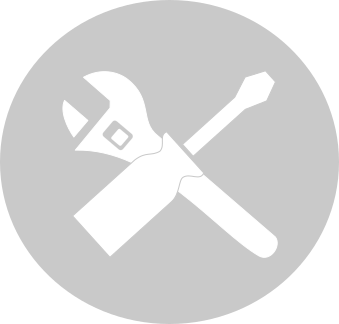Informations General > Tips and Guides > Tutorials > Bikes
> Transmission > Chain replacement
 TUTORIAL REPLACE THE CHAIN
TUTORIAL REPLACE THE CHAIN
Ce tutorial aims to help you replace the chain on your bike.
Difficulty :

Temps necessary:
10 minutes
HOW TO REPLACE THE CHAIN?
A worn bicycle chain is less effective than a new chain. It requires more effort, which can lead to significant fatigue and a reduction in speed. A worn chain can also damage sprockets and chainrings, which may require them to be replaced prematurely.
To check the wear of a chain, we will use a chain wear monitor. This tool has 2 lugs with the acronyms 0.75 et 1.0. It is these which will make it possible to control wear.
During the check, if the lug 0.75 passes between the links, this means that the chain is 100% worn and must therefore be replaced. On the other hand, if the lug 75 passes between the links, then you must also change the bicycle cassette in addition to the chain.
For more information on bicycle chains, do not hesitate to consult our guide page “How to choose the right bike chain”.

1) Place the bicycle on a workshop stand to carry out the chain wear test.

2) Start firstar the test at 100. Here, the lug slips between the links of the chain. It must therefore be changed.

3) Then proceed to the test at 1000. Here, the lug does not pass so there is no need to change the cassette in addition to the chain.

4) Remove the worn chain. To do this, unclip the quick release using the pliers.

5) Once done, remove the quick release.

6) Then, remove the chain.

7) At the back, insert the new chain following the diagram above.
.jpg)
8) Skip the p channelar the derailleur pulleys. Pass it first in front of the upper derailleur pulley.
.jpg)
9) Then pass the string par opening the derailleur cage.
.jpg)
11) Finally, pass it behind the lower roller.
.jpg)
11) You can pass the chain to the front.
.jpg)
11) Insert the chain into the front derailleur.

11) Remember to put the chain on the smallest chainring on the cassette and on the crankset.

11) Check the length of the chain, it must be tight.

11) If the chain is loose, determine how many links to remove.

11) Once this is done, using the chain tool, remove the pin from the link to be separated.

11) Remove the excess links.

11) Install the links and pin provided with the new chain.

11) Using the chain tool, tighten the axle.

11) After clipping the axle, remove the guides.

11) Remove the detachable part of the axle using pliers.

11) Practice the assembled links.

11) Test the flexibility of the new chain.






















